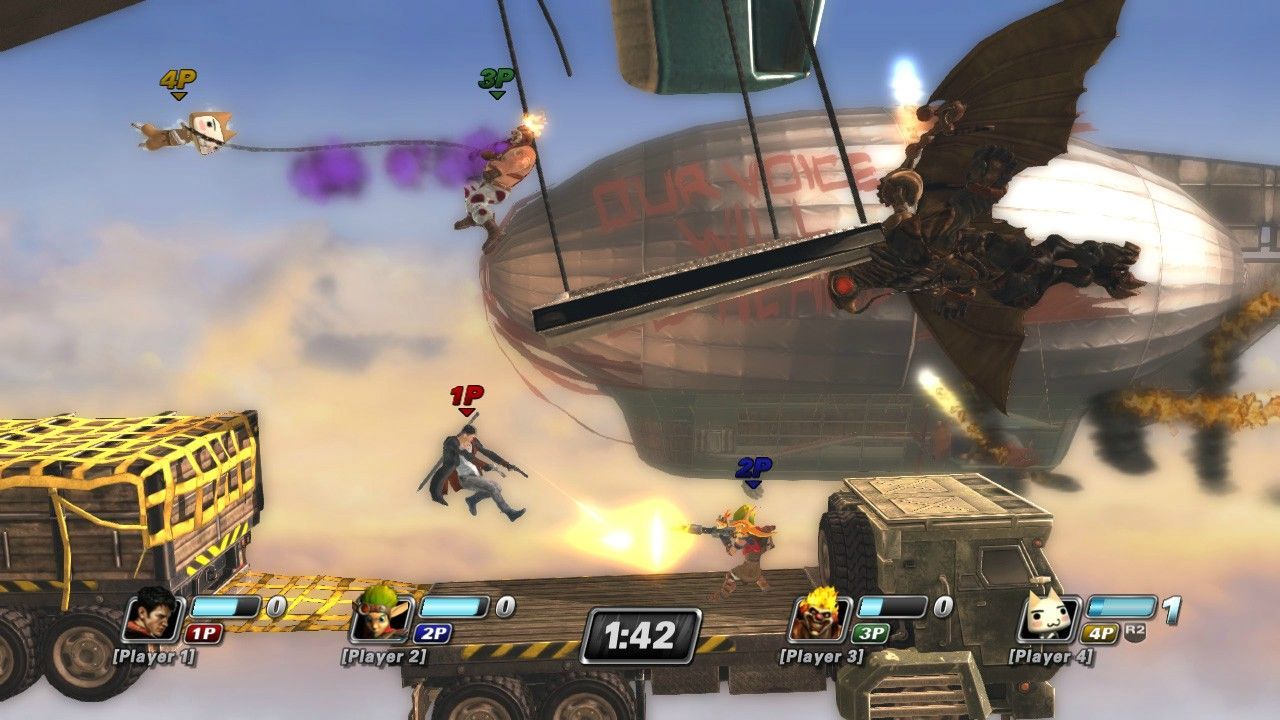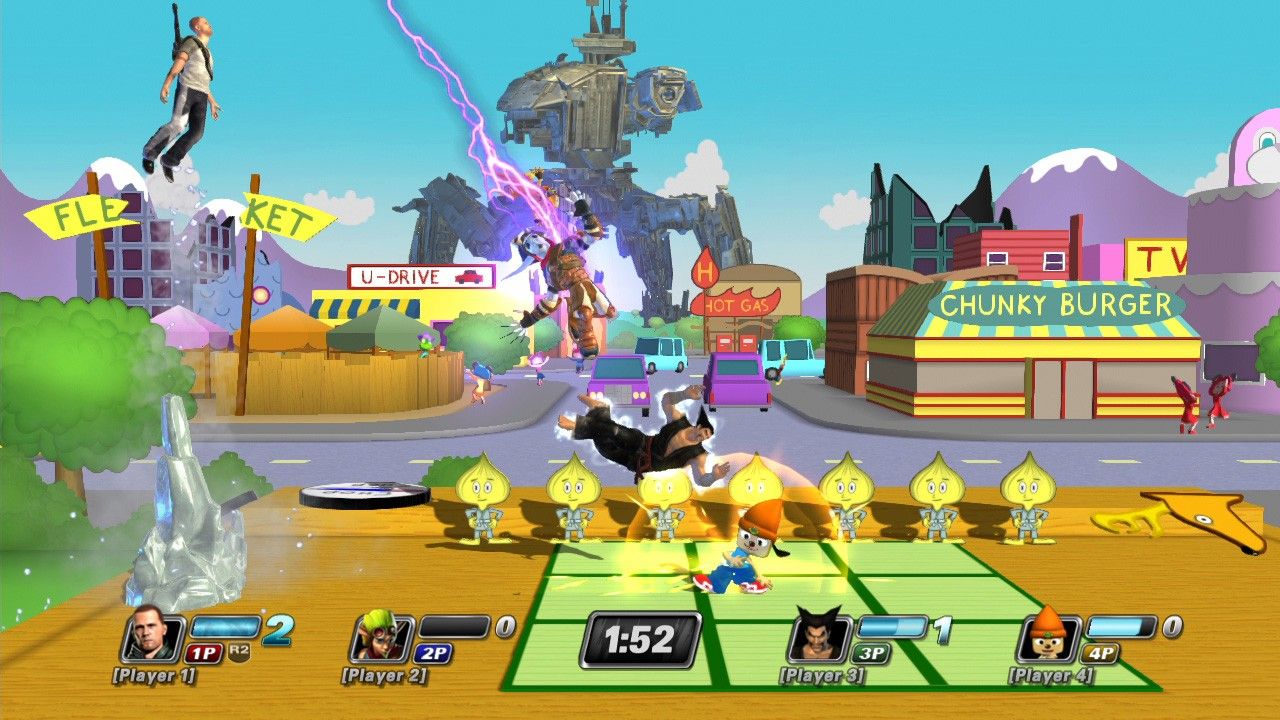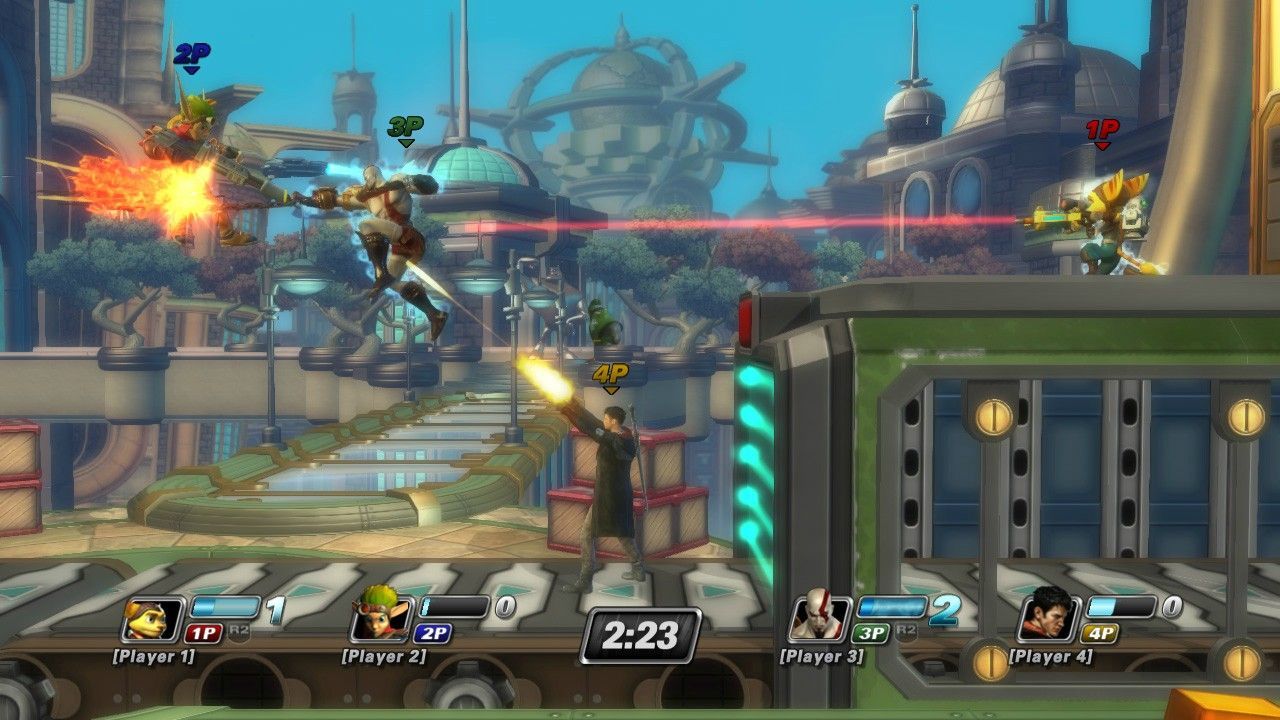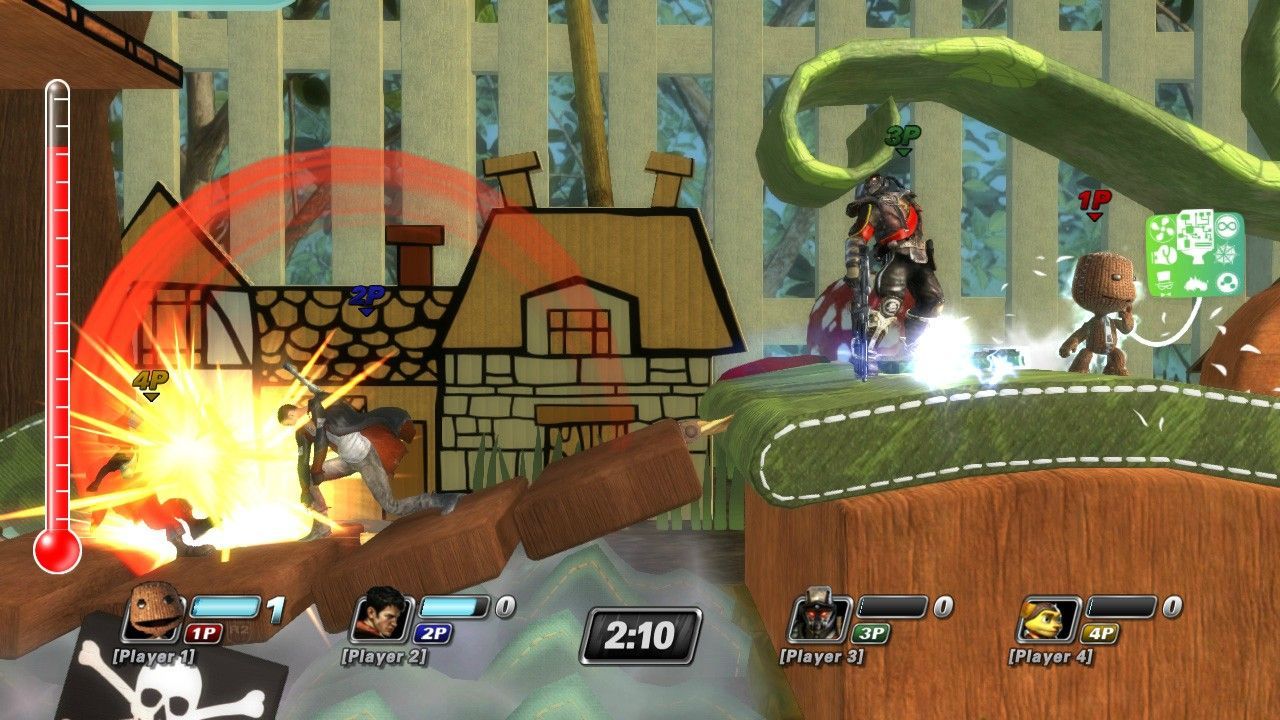PlayStation All-Stars: Battle Royale Review
PlayStation All-Stars Battle Royale is a fighting video game developed by SuperBot Entertainment as their debut title. Up to four players can battle it out in an arena setting, in a sub-genre that has been made popular by the Nintendo’s Super Smash Bros. series. A decently sized roster of combatants duke it out in some game-themed arenas, attempting to bring the most popular PlayStation brands to life. While the gameplay is solid and makes a few design choices that could be controversial, other aspects of the game appear lacking at times. Still, if you’re looking for a multiplayer brawler that doesn’t have anything to do with Nintendo, PS All-Stars is a good bet.
As with any crossover fighting game, the selection of fighters often becomes a crucial factor for some gamers. With an All-Stars title, players will be expecting the most memorable personas from the publisher’s long standing gaming history to make an appearance – but that’s not totally the case. Modern characters like Sackboy from LittleBigPlanet, Nathan Drake from Uncharted, and Cole from InFamous are obvious inclusions. Appearances from classic characters vary, with Kratos from God of War, Sly Cooper, and Sweet Tooth from Twisted Metal filling out the ranks.

Sony has always had strong third-party support, so it makes sense that a few external characters make an appearance, though some of these selections are questionable. You’ve got Raiden from Metal Gear Solid, Big Daddy from BioShock, and Dante from Devil May Cry to play with. This sounds fine in theory, but the issue is that these characters don’t exactly scream PlayStation, and more of cross-promotional material for their respective upcoming games. Raiden’s and Dante’s character designs are from their upcoming games, and there is a BioShock Infinite-themed arena – so you’ve got to wonder what the selection criteria was.
But let’s get down to business. PS All-Stars is a four player arena brawler, where the goal is to eliminate the most opponents within a time limit or be first to score a certain number of kills. You’ve got the usual combo and blocking system, so any seasoned genre experts should be able to pick up and play without any issues. There are a number of systems in place to differentiate this title from others, however, and the appreciation for these mechanics may be the determining factor of your enjoyment of the gameplay.

First and foremost, there is no health bar to worry about. It’s a much different approach – instead, the only way to eliminate your opponents is to build up an AP meter by landing hits. This unlocks your Super attacks, of which there are three levels. So the longer you save up the AP, the sooner you will reach the third level of Supers. Unleashing these attacks is the only way to defeat enemies and score points. Level one super attacks are usually limited range and power, level twos are better, and level threes are completely devastating and can eliminate all players on screen, sometimes without user input. Dying doesn’t remove any AP, so you can continue the battle and unleash your attacks when you are ready.
While the roster may be questionable, once you get into the game you’ll forget all about it. All of the characters present are so accurately and creatively recreated that it seems they were picked right out of their original titles and thrown into the arena. This isn’t the case of a few characters and their re-skinned versions – all on the roster of PS All-Stars have unique abilities, moves, and attacks. Everyone plays completely different, and not just marginally like most other fighting games. You’ve got Nathan Drake firing AKs, Radec with a sniper rifle, Cole has a special movement option to slide around the level, and Kratos using his signature blades, plus tons more that are unique to the characters. Level one and two Supers can often be blocked or dodged, but level three means instant kills with or sometimes without player input. Everyone’s Super attacks are crafted with style – for example you could be calling down hurricanes as Cole or submerge the whole stage underwater as Big Daddy. Due to this, balance is an issue and some characters are indeed overpowered, but thanks to the game’s fast paced nature and non-loss of AP at death, you can always keep up.
Similarly, the arenas in the game are all themed after a certain game. They are fairly simple structurally, as is often the case for the genre. Instead, as the match goes on, they transform and shift, changing not only the background imagery but potentially the arena itself. One moment you could be playing in the happy LocoRoco inspired setting, but suddenly the background falls away and you’ve got a huge Metal Gear in the background. Some stages also feature dangers created by the environment as the battle goes on, that all players should try to doge. It’s a cool idea but once you’ve seen the static stage transformation, it loses value on subsequent playthroughs. Finally, there are also random item spawns that give you extra attack power if you pick them up and can produce AP once you hit enemies. Many of these settings can be tweaked for matches against friends.

As expected, PS All-Stars has a heavy multiplayer focus. Multiplayer modes include time-based matches, last man standing, and kill-limit matches. The competition is actually divided into monthly seasons, so everyone can have a chance to appear on the online leaderboards at some point. As expected, players can also jump in and play with a friend locally or take the battle as 2v2 online. Through numerous matches played online, the connection and servers seem stable and gameplay is very smooth – something that’s often crucial for a fighting game. We did run into some connectivity issues just getting into a lobby, but once the battle is underway there are no problems.
To the game’s credit, there are also a wealth of offline competition, though it mostly comes down to grinding every character to practice their attacks. You can complete a storyline mode with every character, but these are nothing but a set of pre-fixed battles against random opponents with varying win conditions. In a somewhat dubious move, the arenas don’t change from character to character, so you’ll be playing in the same setting every time you wish to complete a character’s campaign. Outside of that, you’ve also got challenge modes and training modes for various characters and skill sets, so there’s no shortage of practice to be had. The ability to customize your characters visually and earn some badge and profile customizations adds a bit of bonus for using the same characters in matches.

PS All-Stars’ menus are a bit on the basic side, potentially a throwback to the old days of the arcade. The menu music breaks up awkwardly when you’re changing between some screens, but otherwise there are no problems. During battle, the camera sometimes behaves awkwardly as it tries to keep everyone on-screen and thus adjusts zoom often; it can be pretty difficult to keep track of where you are at times. Just like their attacks and abilities, the visuals and audio for every character is wonderfully done with smooth animations and most original voice actors present. There appears to be very few music tracks in the whole game, which can be annoying.
So overall, PlayStation All-Stars: Battle Royale does what it aimed to do – bring an exclusive brawler to Sony’s current flagship consoles. The character selection may be questionable, likely due to copyright issues, but those personas that made it into the game have been fully realized and made unique. Sure there are balance issues, but that’s hardly a problem if you’re just looking for some fun multiplayer with friends. There is some value here even for those who wish to practice offline before making the jump to competitive modes. Time will tell if the game manages to achieve a cult status amongst PlayStation fans and create a mainstay fanbase like the Nintendo games did.
